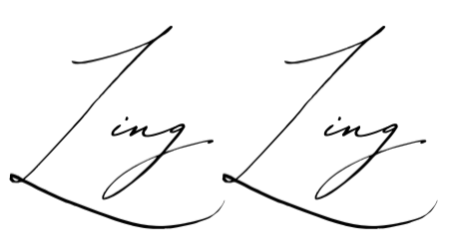Adaptability or Authenticity – Which is Better?
Authenticity and adaptability are often seen as opposites—being true to yourself might seem rigid, while adapting could feel like a loss of self. Yet, in a globalized world, success requires both: staying authentic while flexibly engaging with diverse environments.

Once, an American expatriate led a team of 150 employees in a multinational company in Singapore. In meetings, the expatriate would regularly speak up and interject in conversations. Soon after, the expatriate realised that others remained silent. Perceived as self-centred, they felt uncomfortable challenging him. Once, an Indonesian manager met a European business partner for the first time. Wanting to impress and establish a relationship, the Indonesian manager adjusted their accent and became more outspoken. Because it was the European business partner’s first visit to Indonesia, they felt welcomed and at ease in communication. However, the manager’s peers saw the manager as ingratiating and inauthentic.
The American expatriate wanted to show authenticity but was ineffective in the Singapore work culture. The Indonesian manager adapted to show hospitality but was perceived as too eager and insincere.
Authenticity and Adaptability are usually seen as a dichotomy, pitted against each other. The argument is that when one adapts, one loses authenticity. When you are authentic, others may be unable to understand or relate. Both are needed to succeed in a globalised world.
The question is, “How can we balance authenticity and adaptability?”
When you want to balance authenticity and adaptability, there are three key things to consider. First, recognise your core values. Second, embrace discomfort. Finally, know the right time and place to practice authenticity and adaptability.
Before we delve deeper into the balancing act of Adaptability and Authenticity, let’s explore what it means to be adaptable and authentic.
The Case for Authenticity
Authenticity has been such a big buzzword of late. Advocates of authenticity speak of being true to yourself. Being authentic also means continuously aligning your core values and beliefs with your behaviour and lifestyle. By doing so, others can recognise your true self and build a deeper connection and lasting trust.
In the book The Gifts of Imperfection, Brene Brown says
Authenticity is a collection of choices that we have to make every day. It’s about the choice to show up and be real. The choice, to be honest. The choice to let our true selves be seen. Honesty and being real are essential in building trust and establishing long-lasting relationships. However, different cultures perceive authentic behaviour differently.
In the example of the American expatriate, his cultural values of speaking your mind is seen as authentic behaviour. However, if the same behaviour occurs in a collectivist culture, others may perceive this person as boastful, inconsiderate, and possibly incompetent.
The opposite can be true, too. For example, the Indonesian manager from a collectivist society listens intently to visitors from an expressive and individualist culture. Those in the individualist society might perceive this person as not value-adding or possibly incompetent.
In both the American expatriate and Indonesian manager cases, the perception of others is different from the person’s intention. As such, can adaptability help us be perceived as more authentic?
The Case for Adaptability
Adaptability is a skill that can be developed, yet it’s not taught by many. According to Barclays LifeSkills, 60 per cent of those surveyed say adaptability has become more critical in the previous decade. In LinkedIn’s Workplace Learning Report 2020, adaptability is one of the top five soft skills companies need most.
Why has adaptability become such an essential skill in the workplace? Faced with unprecedented changes in society, economies and technologies, the best way for businesses to survive and remain competitive is to become adaptable.
When crossing cultures, individuals who cannot adapt are perceived as rigid, unwilling to learn, inconsiderate, or even rude. For example, a leader who makes all the decisions finds themselves in a culture that practices consensus-based decision-making. The leader might be perceived as arrogant and inconsiderate of their peers.
When individuals demonstrate too much flexibility, they can be perceived as ineffectual, lacking will, and, at worst, hypocritical. In the Indonesian manager's example, the subordinates might perceive this behaviour as ingratiating and possibly cowardly when their leader speaks and behaves differently with different stakeholders and clients.
While we need adaptability to survive, too much of it can be disorienting to others.
How can both authenticity and adaptability work together?
All failure is failure to adapt, all success is successful adaptation. Max McKeown
Authenticity And Adaptability Are Not Mutually Exclusive
Humans are multifaceted and complex. We are more than a label or style. We don’t fit in rigid categories. Imagine that each of us is an iceberg, where only 11 per cent of ourselves appears above water. The iceberg above the water is what everyone can see: our sense of fashion, preferred cuisine, traditional holidays, and many other cultural markers. The iceberg below the water consists of unseen parts, parts of ourselves that are more difficult to explain, such as our beliefs, values, thought processes, customs, and many others.
Within our multifaceted selves, we can choose which parts stay authentic and which can be adaptable. Just as the chameleon changes its skin colour to blend into its surroundings, it will always remain a reptile. To balance authenticity and adaptability, one has to be clear in one’s values, beliefs, and intentions and courageous enough to learn different ways of delivering one’s authentic self. Multicultural societies with high levels of racial integration regularly demonstrate the delicate balance between adaptability and authenticity.
For example, South Africa has over ten tribes and ethnic groups with 11 national languages. In communicating and interacting, it is common to hear them adjust their behaviour and speak multiple languages in a conversation about each other’s culture. Yet, their intention behind it remains the same.

How Can We Balance Authenticity And Adaptability?
The balancing act between authenticity and adaptability takes time to develop, as does the courage to experiment, openness to feedback, and persistence to keep trying. Here are some suggestions.
Make a list of your values.
Firstly, we need to reflect on and clarify our core values, beliefs, and intentions. By doing so, you can be sure that the essence of your message stays the same even when the style and method of delivery differ.
Clear away about half an hour of your time. Find a quiet space to focus. Grab a pen and paper and ask yourself these questions.
- What were the moments in your life that gave you the most joy and fulfilment?
- What were the moments in your life that made you angry, sad, frustrated, or disappointed?
- When reviewing these moments, what were the values behind them?
Become comfortable in uncomfortable situations.
We naturally want to remain in our comfort zone to avoid inconvenience, uneasiness, and struggles. The biggest problem with staying in the comfort zone is that we become complacent and stop learning.
While changing your ways drastically is unrealistic and possibly dangerous, you can stretch your comfort zone by trying these few steps.
- Go to places you’ve not been to before. It does not have to be an exotic country. It could be an unexplored area in a town or even the other side of your neighbourhood. Find a new restaurant or cafe to try. Notice the architecture, the streets, the kinds of shops and restaurants available. Observe the people, their clothing, and their surroundings.
- Try something new every day. Take a different route to work. Watch a different movie genre or even a movie in a foreign language. (with subtitles, of course) Listen to a new podcast show.
- Make a new connection. With social media, it is easier now than ever to make a new connection with someone from a different culture. Drop a message to say hello or give a compliment. Don’t expect to be BFF (best friends forever). Stay curious and open.
While authenticity and adaptability are usually pitted against each other, we need a balance of both to succeed in a culturally diverse environment. Misunderstandings or conflicts may arise when you’re too rigidly authentic or highly flexible. Multicultural societies, such as in South Africa, are great examples of balancing adaptability and authenticity, which means this skill can be developed. Without this skill, it will be difficult for you to be successful and effective in a globalised world.
This post is updated from the originally published post on Culture Spark Global on 4 November 2021 and written by the same author, Ling Ling Tai.





